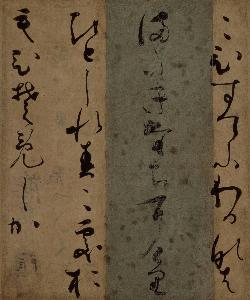Fujiwara No Teika, Fujiwara No Sadaie
Fujiwara No Teika, Fujiwara No Sadaie;Fujiwara Teika
Mjesto: Kyoto
Rođen: 1162
Smrt: 1241
Biografija:
Early Life and Career
Fujiwara No Teika, also known as Fujiwara No Sadaie, was born into a poetic clan. His father, Fujiwara No Shunzei, was a noted poet, and Fujiwara No Teika began his long and distinguished career after coming to the attention of the Retired Emperor Go-Toba. His relationship with Go-Toba was at first cordial and led to commissions to compile anthologies, but later resulted in his banishment from the retired emperor's court. Artistic Style and Contributions
Fujiwara No Teika's critical ideas on composing poetry were extremely influential and studied until as late as the Meiji era. His descendants and ideas would dominate classical Japanese poetry for centuries afterwards. As a calligrapher, Fujiwara No Teika was known for his beautiful and expressive handwriting, which is still admired today. Notable Works and Legacy
Some of Fujiwara No Teika's notable works include the compilation of the Hyakushi, a collection of one hundred poems. His legacy extends beyond his own work, as he is also known for his influence on later poets and calligraphers. Fujiwara No Teika's style and contributions can be seen in the works of other artists, such as Tsunetaka Ochi and Keika Miyoshi, who are featured on Wikioo.org.
Conclusion
Fujiwara No Teika, also known as Fujiwara No Sadaie, was a master of Japanese poetry and calligraphy. His legacy continues to be felt today, with his work being studied and admired by art lovers around the world. As a key figure in the development of Japanese literature and art, Fujiwara No Teika remains an important part of Japan's cultural heritage.

